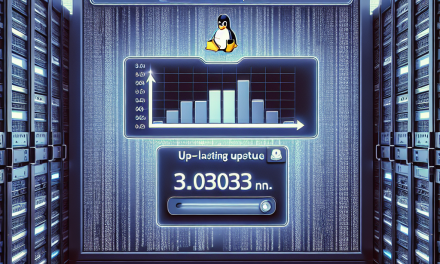In the ever-evolving landscape of cybersecurity, traditional perimeter-based defense mechanisms are slowly becoming inadequate. This shift has given rise to the Zero-Trust security model, which mandates that no user or device, whether inside or outside the network, should be trusted by default. Instead, each request for access must be strictly verified. Here, we will explore how to implement Zero-Trust principles within Linux server environments, ultimately enhancing security and protecting sensitive assets.
Understanding Zero-Trust Principles
At its core, Zero-Trust architecture relies on the following core principles:
-
Never Trust, Always Verify: Every user and device must be authenticated and authorized before being allowed access to systems and data.
-
Least Privilege Access: Users and applications are granted the minimum level of access needed to perform their tasks, minimizing potential damage from misuse or compromised accounts.
-
Micro-Segmentation: Networks are divided into smaller segments to limit lateral movement by attackers within the network.
- Continuous Monitoring and Validation: Even after accessing a resource, user behaviors are monitored for any signs of malicious activities.
Steps to Implement Zero-Trust in Linux Server Security
1. User Authentication and Authorization
Implement strong user authentication mechanisms to prevent unauthorized access:
-
Multi-Factor Authentication (MFA): Require users to provide multiple forms of identity verification before granting access. Tools like Google Authenticator or Yubikey can be effective.
- SSH Key Management: Use SSH keys instead of passwords for secure remote access. Ensure that key pairs are centrally managed and rotated regularly.
Implement role-based access control (RBAC) to define user roles and permissions, ensuring that every user is granted the least privilege necessary to perform their functions.
2. Hardening the Linux Server
A well-hardened Linux server is a crucial part of a Zero-Trust framework:
-
Regular Updates and Patching: Keep your Linux distribution and installed applications up to date. Use package managers like
aptoryumfor dependency management. -
Firewall Configuration: Use tools like
iptablesorufw(Uncomplicated Firewall) to control inbound and outbound traffic effectively. Block all unnecessary ports and only allow specific protocols. - Ensure Security with SELinux/AppArmor: Both SELinux and AppArmor provide mandatory access controls to restrict the system’s programs and processes. Implement these tools to enforce strict policies that confine the applications.
3. Network Segmentation and Isolation
Micro-segmentation within your network can greatly improve your security posture:
-
Virtual Private Networks (VPN): Use VPNs to encrypt data in transit and create isolated networks where only trusted users can access sensitive servers.
-
Docker and Containerization: Consider leveraging containers for applications. Use tools like Kubernetes alongside proper configuration to create isolated environments that reduce risk.
- Network Access Control Lists (ACLs): Implement network ACLs to limit access between different segments of your network. This limits lateral movement should an intrusion occur.
4. Continuous Monitoring and Incident Response
Establishing a strategy for continuous monitoring is vital in a Zero-Trust model:
-
Log Monitoring and Analysis: Use tools like
syslog,Logwatch, orELK stack (Elasticsearch, Logstash, Kibana)to log events. Regularly analyze these logs for unusual activities. -
Intrusion Detection and Prevention Systems (IDPS): Implement an IDPS like
OSSECorSnortto monitor the system for potential threats in real time. Configure alerts and response plans for different scenarios. - Regular Security Audits: Conduct periodic security audits and penetration testing to evaluate defenses and identify vulnerabilities.
5. Secure Data Management and Encryption
Data security is paramount in a Zero-Trust environment:
-
Encryption: Implement encryption mechanisms for data at rest and in transit. Use
GnuPGfor file encryption andOpenSSLfor securing data communications. - Backup and Recovery Plans: Establish regular backups of critical data and test recovery mechanisms to ensure business continuity in case of a breach.
Conclusion
In a world where threats are pervasive and evolving, adopting a Zero-Trust architecture in Linux server security is more than a proactive measure—it’s an essential strategy for safeguarding your organization’s digital assets. By focusing on strict authentication, minimizing access, micro-segmenting the network, continuous monitoring, and adopting robust data protection measures, you lay a robust foundation for a secure Linux environment. Implementing these principles will not only mitigate risks but also enhance your overall security posture as you navigate the complex landscape of cybersecurity.
This is an ongoing process; as technology and threats evolve, so too should your security practices. Whether you’re managing a small server or a large enterprise infrastructure, the Zero-Trust model provides a resilient framework against the backdrop of modern cybersecurity challenges.





